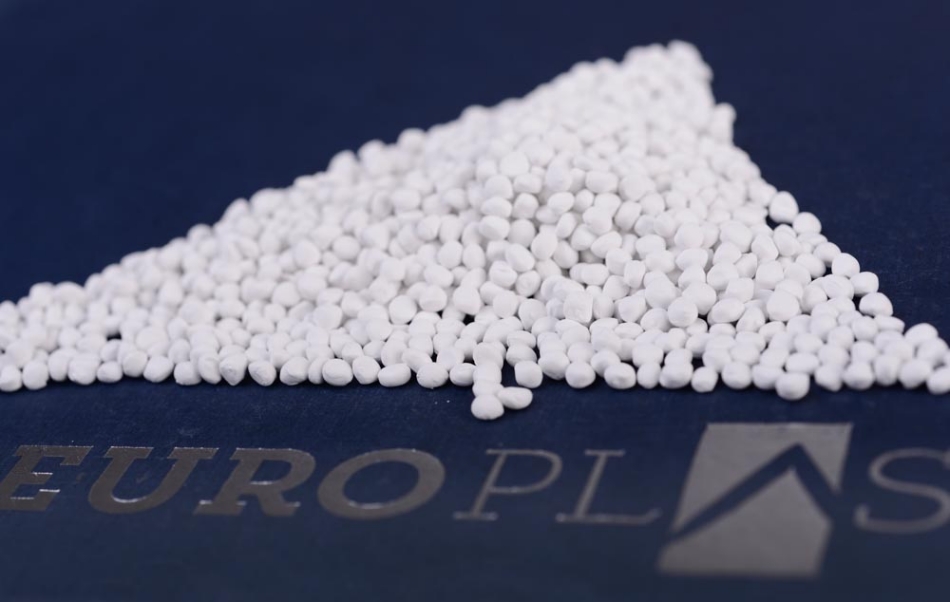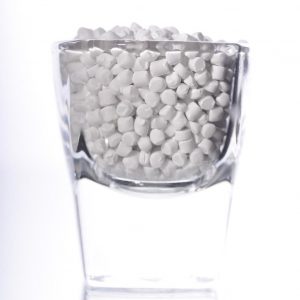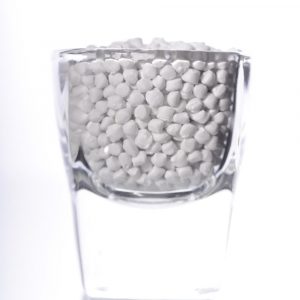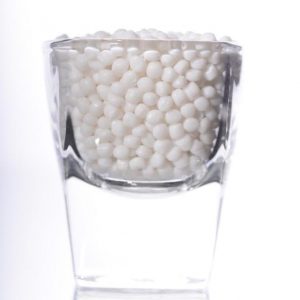Calcium carbonate filler (CaCO3 filler, also known as calcium carbonate masterbatch) has always been the most commonly used filler in the plastic industry. Their position has never declined despite the processing and modifying technologies that have been researched and applied more and more over years. So what characteristics of calcium carbonate filler made manufacturers widely use them? Let’s dive straight right away in this post!
I. Reasons contributing the current position of calcium carbonate filler in plastics industry
Not only in the plastic industry but calcium carbonate filler also function as a filler that is widely used in other industries and production worldwide.
The reason CaCO3 is favored is that firstly, this material source is extremely abundant and available in many areas and regions around the world. The abundance of reserves allows the exploitation of this substance to be unrestricted, resulting in low cost and stable supply for a long time. Secondly, calcium carbonate has moderate hardness, and is not too soft but still not too hard, making it easy to process and the process can grind into powder or into larger sizes. Thirdly, CaCO3 also works in reducing plastic melting pressure when shaping plastic into product forms.
In addition, when used in production, calcium carbonate masterbatch is a relatively good stabilizer, which will help improve bubble floatation in the production of plastic beads. This helps the product achieve a smooth and beautiful surface. Finally, CaCO3 is chemically suitable for combination with many other substances, so manufacturers can combine this substance with many different types of plastics and polymers. In short, calcium carbonate filler brings a lot of economic value to producers, both in quantity, production capacity, and product quality.
2. What effects does calcium carbonate filler benefit the plastics industry?
When used as a plastic additive, in addition to replacing a part of raw materials and helping manufacturers to reduce production costs as much as possible, CaCO3 also functions to help plastic products increase hardness, durability, adhesion as well as impact resistance. In addition, the aesthetics of the end product also increased significantly since CaCO3 improves and adjusts the glossiness and opacity of the product’s surface (by adjusting the amount of calcium carbonate filler added to the plastic). At the same time, adding CaCO3 to plastic products also increases their surface printability.
3. What are the properties of calcium carbonate filler?
Where is calcium carbonate filler found in nature?
CaCO3 is a natural compound that is easily found in nature. They are found both in geological mines and in the biological structures of living organisms. Calcium carbonate is an indispensable ingredient in eggshells and shells of marine organisms (oyster shells, sea shells, snail shells, and even corals). However, the main source of supply of calcium carbonate filler comes from limestone quarries. In nature, CaCO3 exists under 3 main forms of crystals: calcite, aragonite, and vaterite. Among the three, calcite, thanks to its relevancy of crystal structure, is the most commonly used type because they have the most commercial applications.
The physical properties of calcium carbonate
Pure calcium carbonate are in solid form (usually in the form of fine powder), odorless, and have a white color with melting temperatures ranging from 800 to 1400oC. Their molecular weight is 100,087 g/mol.
Chemical properties of calcium carbonate
The reason that manufacturers can widely use calcium carbonate filler in plastic production is that the chemical properties of it (CaCO3) and the plastic in the association are not changed when mixed together with many plastic types and other additives. In addition, calcium carbonate is also insoluble in water, stable under normal temperature conditions, and only reacts with some strong acids (such as HCl), medium (such as sulfamic), or weak acids (acetic, citric, phosphoric, lactic, sorbic). Thanks to these properties, plastic products generated from calcium carbonate masterbatch will be applied in a wide range of fields, including those required for the assurance of user safety such as the food and beverage industry.
4. 2 types of common calcium carbonate used to produce calcium carbonate filler
In industries that use calcium carbonate filler, they are used in two forms: coated CaCO3 and uncoated CaCO3. Coated CaCO3 is mainly exploited from limestone or white marble mines with high purity and only differs from uncoated CaCO3 at the point that they are coated with fatty acids (stearic acid) and bonding agent (Titanate Coupling Agent) on its surface. In general, the physical and chemical properties of these two types of calcium carbonate masterbatch are not significantly different. Most physical properties such as whiteness, brightness, humidity, weight, pH, etc. do not consist of any differences between the 2 types. The only exception is oil absorption in which uncoated CaCO3 is superior (30.08 g/100g compared with coated CaCO3 only 18.71 g/100g). The following are indicators that show the physical properties of calcium carbonate:
- Whiteness: 98% minimum
- Brightness: 96% minimum
- Humidity: 0.2% maximum
- Gravity: 2.7 g/cm3
- Specific surface area: 4.23 - 4.72 m2/g
In addition to their chemical composition, in addition to the presence of stearic acid, there is no difference:
- Calcium carbonate (CaCO3): 98.5%
- Silicon Oxide (SiO2): 0.03%
- Magnesium Oxide (MgO): 0.02%
- Aluminum Oxide (Al2O3): 0.02%
- Iron Oxide (Fe2O3): 0.02%
5. Applications of calcium carbonate filler in plastics industry
In production, calcium carbonate filler is used in combination with a wide variety of plastics, from rigid plastic, and flexible plastic to thermoplastic. Applications of calcium carbonate masterbatch are numerous. If you pay attention, you will notice a lot of things around us, which we use and contact daily are made from CaCO3 filler. Applications generated through the injection molding methods with this type of masterbatch include food wraps used in supermarkets, shopping bags, garbage bags, agricultural films, etc.
Transparent Filler MasterbatchTalc Filler masterbatch
6. Europlas Calcium carbonate filler product lines
 PE FILLER MASTERBATCH
PE FILLER MASTERBATCH
 HD FILLER MASTERBATCH
HD FILLER MASTERBATCH
 PP FILLER MASTERBATCH
PP FILLER MASTERBATCH
 BiO Filler bioplastic
BiO Filler bioplastic
 HIPS FILLER MASTERBATCH
HIPS FILLER MASTERBATCH
 Transparent Filler Masterbatch
Transparent Filler Masterbatch
 Talc Filler masterbatch
Talc Filler masterbatch